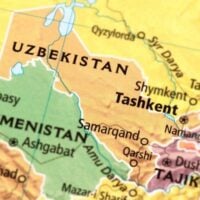Deadline: 31 May 2020
The Facility for Low Carbon Technology Deployment (FLCTD) project, implemented by the United Nations Industrial Development Organization (UNIDO) in collaboration with the Bureau of Energy Efficiency (BEE) is launching the 2020 annual Innovation challenge.
The Challenge is open for Waste Heat Recovery technology innovations across all industrial sectors. These innovations shall be deployed to address technology gaps and improve overall energy efficiency in industries and commercial operations for the following areas:
- High temperature range: Innovations demonstrating heat recovery at temperature ranges above 600 degree Celsius for productive end-use applications such as, but not limited to, power generation, pre-heating of feedstock, pre-heating of primary / secondary air, space conditioning or any other use in the process or utility service that requires heating. The innovation should demonstrate reduction in the energy released in atmosphere from the production processes that are either continuous or intermittent (batch process) type, without effecting product quality.
- Medium temperature range: Innovations demonstrating heat recovery at temperature ranges between 600 degree and 150 degree Celsius for productive end-use applications such as, but not limited to, power generation, pre-heating of feedstock, pre-heating of primary / secondary air, moisture removal from feedstock or solid fuel, space conditioning or any other use in the process or utility service that requires heating. The innovation should demonstrate reduction in the energy released in atmosphere from the production processes that are either continuous or intermittent (batch process) type, without effecting product quality.
- Low temperature range: Innovations demonstrating heat recovery at temperature range below 150 degree Celsius for productive end applications such as, but not limited to, pre-heating of feedstock, moisture removal from solid fuel, cooling or any other use in the process or utility service that utilizes heat. The innovation should demonstrate reduction in the energy released in atmosphere from the production processes that are either continuous or intermittent (batch process) type.
Grant Information
- Grant up to USD 50,000 for winning technology with provision for demonstration at multiple locations, wherever required;
- Grant disbursement will be linked to the progress. Indicative progress-based milestones are:
- 30% of the award grant will be given to the innovator winning the innovation challenge
- 50% after installation/commissioning of the innovation
- 20% at the end of the deployment phase, upon completion of Technology Verification Reporting
Eligibility Criteria
- The innovation challenge is open to Entrepreneurs, Startups, Indian Technical Institutes / Universities, Research Institutes, Micro, Small and Medium Enterprises, Industries, Public Sector Enterprises and Government Laboratories.
- Consortium of Indian companies, non-profit organization, Association, academic institution, R&D organization.
- Indian Start-up companies in collaboration with Industry/Academia/research institutes/ are highly encouraged to apply.
- Technologies funded under Department of Science and Technology (DST) and other government schemes, at pre-market phase (TRL 4 – TRL 6) and ready for field demonstration will be given preference.
- Innovation teams with women entrepreneurs will be given preference.
Qualifiers
All innovative solutions should be based on the proof-of-concept or early stage prototype and clearly indicate the technology gap being addressed.
Following are the indicative qualifiers:
- Innovations that result in overall efficiency improvements.
- Emerging and novel technology applications that reduces energy consumption, including through power generation, system heat requirement reduction, reduction/substitution in use of fossil fuel.
- Design improvements that reduce energy consumption, overcome application constraints and improve economic feasibility.
- Heat recovery from untapped/un-utilized sources of heat.
Parameters for Selection
This is only an indicative list, and is not exhaustive, and is subject to change and modification.
- Nature of innovation (Product design/Process Innovation)
- Addresses a key issue/technology gap in the industry
- Replication potential
- Scalability and sustainability
- Energy saving and greenhouse gas emission reduction potential
- Financials (pay-back period, Internal Rate of Return)
- Technology readiness stage (R&D/ Prototype/Pilot demonstration/Commercial)
- Intellectual Property Right / Patents (granted/applied)
For more information, visit https://www.low-carbon-innovation.org/whr-2020









































